Essential ICN Rules (Madrid Code) to Know
Understanding the Core Principles of Botanical Nomenclature
Reference:
Turland, N.J., Wiersema, J.H., Barrie, F.R., Gandhi, K.N., Gravendyck, J., Greuter, W., Hawksworth, D.L., Herendeen, P.S., Klopper, R.R., Knapp, S., Kusber, W.-H., Li, D.-Z., May, T.W., Monro, A.M., Prado, J., Price, M.J., Smith, G.F. & Zamora Señoret, J.C. 2025. International Code of Nomenclature for algae, fungi, and plants (Madrid Code). Regnum Vegetabile 162. Chicago: University of Chicago Press.
Article 6.4. Illegitimate Name
An illegitimate name is one that is designated as such in Art. 18.3, 19.6, 52–54, F.3.3, or F.6.1(see also Art. 21 Note 1 and Art. 24 Note 2). A name that according to this Code was illegitimate when published can become legitimate later only if:
(a) it is conserved (Art. 14), protected (Art. F.2), or sanctioned (Art. F.3); or
(b) the name is nomenclaturally superfluous under Art. 52 and its intended basionym is conserved or protected; or
(c) Art. 18.3 or 19.6 so provide.
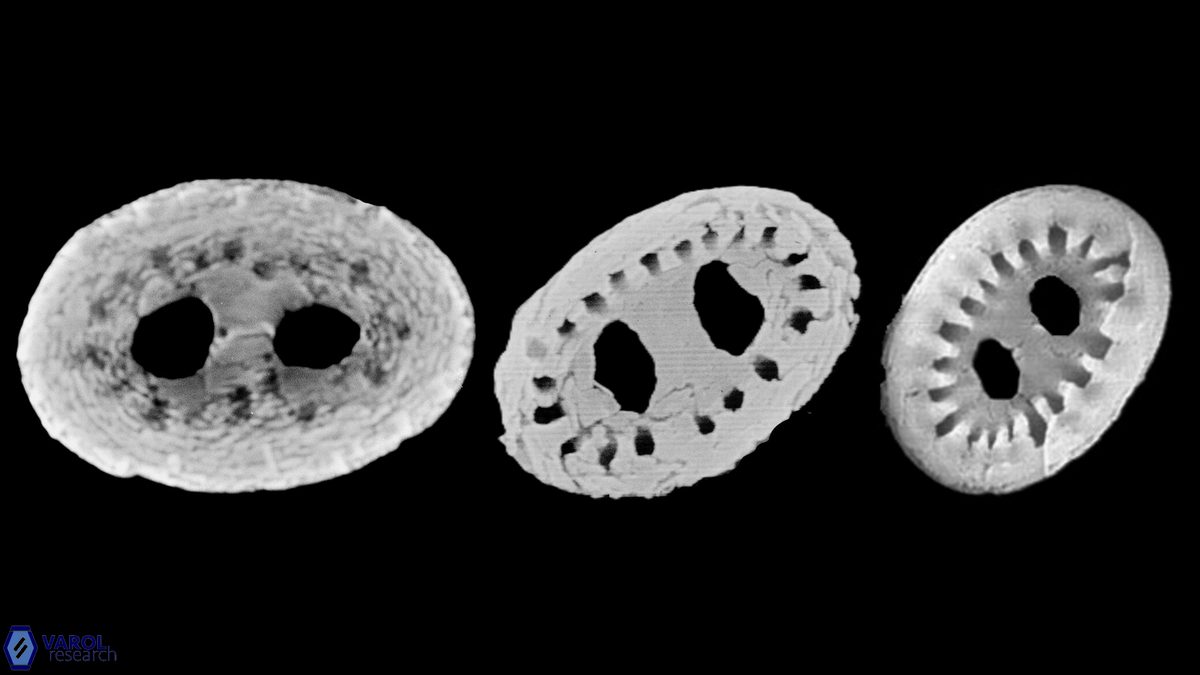
Article 9.1. Holotype
A holotype of a name of a species or infraspecific taxon is the one specimen or illustration (but see Art. 40.6) either:
(a) designated in the protologue as the nomenclatural type; or
(b) used by the author(s) in preparing the protologue when no type was designated; or
(c) as described in Art. 9 Note 1.
As long as the holotype exists, it fixes the application of the name concerned (but see Art 9.15).

Article 9.3. Lectotype
A lectotype is one specimen or illustration designated from the original material (Art. 9.4) as the nomenclatural type, in conformity with Art. 9.11 and 9.12:
(a) if the name was published without a holotype; or
(b) if the holotype is lost or destroyed; or
(c) if a type is found to belong to more than one taxon (see also Art. 9.14).
For sanctioned names (Art. F.3), a lectotype may be selected from among elements associated with either or both the protologue and the sanctioning treatment (Art. F.3.10).
________
Conditions for the designation of lectotype can be summarised as below:
1. illustration from the original material as the nomenclatural type
Only original slide or sample is acceptable for "original material". The type area or the type section can not be satisfactory for "original material" designation. They may contain multiple stratigraphic levels / different nannofossil assemblages.
2. if no holotype was indicated at the time of publication
The lectotype can only be designated for the species published before 1 January 1958 if no holotype was indicated at the original publication.
After 1 January 1958, if no holotype was indicated at the original publication, that species is invalid and has no place in ICN (Art. 12.1).
Example: Cribrosphaerella danica Brotzen, 1959
3. if the holotype is missing
This is not applicable for nannofossils because the holotypes photos of all the nannofossils published are publicly available.
4. if a type is found to belong to more than one taxon
This is the only genuine reason for the designation of a lectotype for post 1 January 1958 publications.
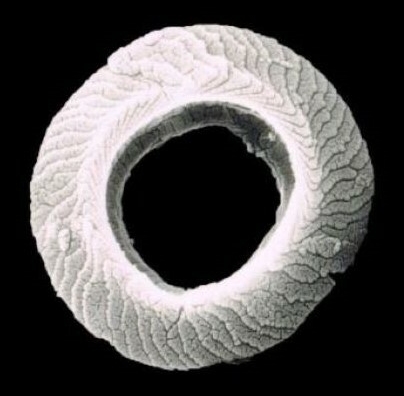
Article 11.2. Priority
A name has no priority outside the rank in which it is published (but see Art. 53.4).
Example:
Species Cyclococcolithus astroporus Stradner, 1963 has priority over the subspecies Cyclococcolithus leptoporus inversus Deflandre in Deflandre &Fert, 1954
Species Helicosphaera truncata Bramlette & Wilcoxon, 1967 has priority over the subspecies Helicosphaera seminulum recta Haq, 1966 [if considered synonyms]
Because Cyclococcolithus astroporus and Helicosphaera truncata were published before the above subspecies were amended into species ranks
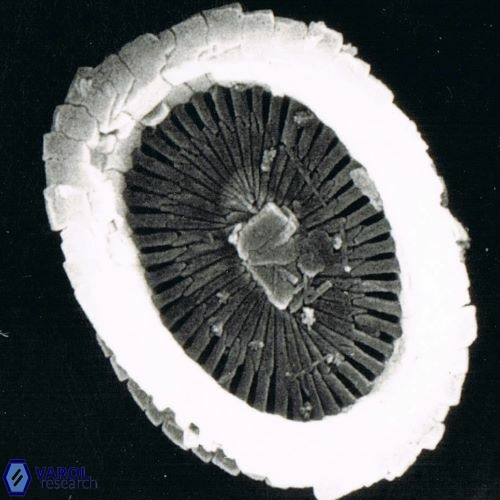
Article 12.1. Status
A name of a taxon has no status under this Code unless it is validly published (see Art. 6.3, but see Art. 14.4 and 14.9).
If a species is invalid when published, it cannot be amended because the invalid species has no status under the ICN.
Loeblich & Tappan (1966) state, "According to ICZN, an available name satisfies the rule; the valid name of a taxon is the oldest available name applied to it. The equivalent terms in the ICBN (=ICN) are legitimate and correct, respectively."
To illustrate this ICN article, consider the following analogy:
Suppose you applied for a frequent-flyer membership with an airline but omitted one or several required details, whether intentionally or inadvertently. As a result, the airline was unable to process your application, and your information was not entered into its system. Later, when you requested an upgrade, the airline reasonably declined, stating that you must first submit a complete application to be formally registered and eligible for any benefits or upgrades.
Recommended (ICN-compliant)
Sphenolithus milanetti Maiorano & Monechi, 1998.
The name Sphenolithus milanetti, as used by Fornaciari et al. (1990), constitutes a nomen nudum, having been published without a formal description or diagnosis, and therefore has no standing under the ICN (Art. 38.1). Maiorano & Monechi (1998) subsequently validly published Sphenolithus milanetti as a new species, rather than amending the earlier, invalid name.
Not Recommended (ICN-not compatible)
Cribrosphaerella danica Brotzen, 1959, is invalid under the ICN Art. 40.1 because more than one specimen was illustrated and no holotype was designated.
Van Heck & Perch-Nielsen (1987) attempted to validate this taxon by proposing the amended combination Chiasmolithus danicus (Brotzen, 1959) ex van Heck & Perch-Nielsen, 1987. However, this action is not acceptable under the ICN, because the cited Basionym (Cribrosphaerella danica Brotzen, 1959) is itself invalid and therefore has no nomenclatural standing under the Code.
Had van Heck & Perch-Nielsen (1987) instead described Chiasmolithus danicus as a new species, without reference to the invalid Basionym and explicitly indicated it as sp. nov., the name would have been validly published under the ICN, as all other requirements appear to have been fulfilled.
Sullivania edwardsii (Romein, 1979) Varol, 1992a should be used instead, as its holotype is identical to the specimen referred to as Chiasmolithus danicus (Brotzen, 1959) ex van Heck & Perch-Nielsen, 1987, a name that lacks standing under the ICN due to the invalidity of its basionym.
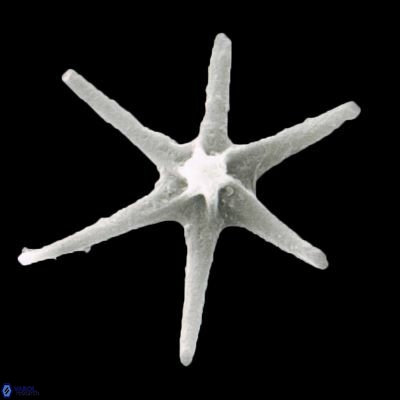
Article 35.1. Assignment
A name of a taxon below the rank of genus is not validly published unless the name of the genus or species to which it is assigned is validly published at the same time or was validly published previously (but see Art. 13.4).
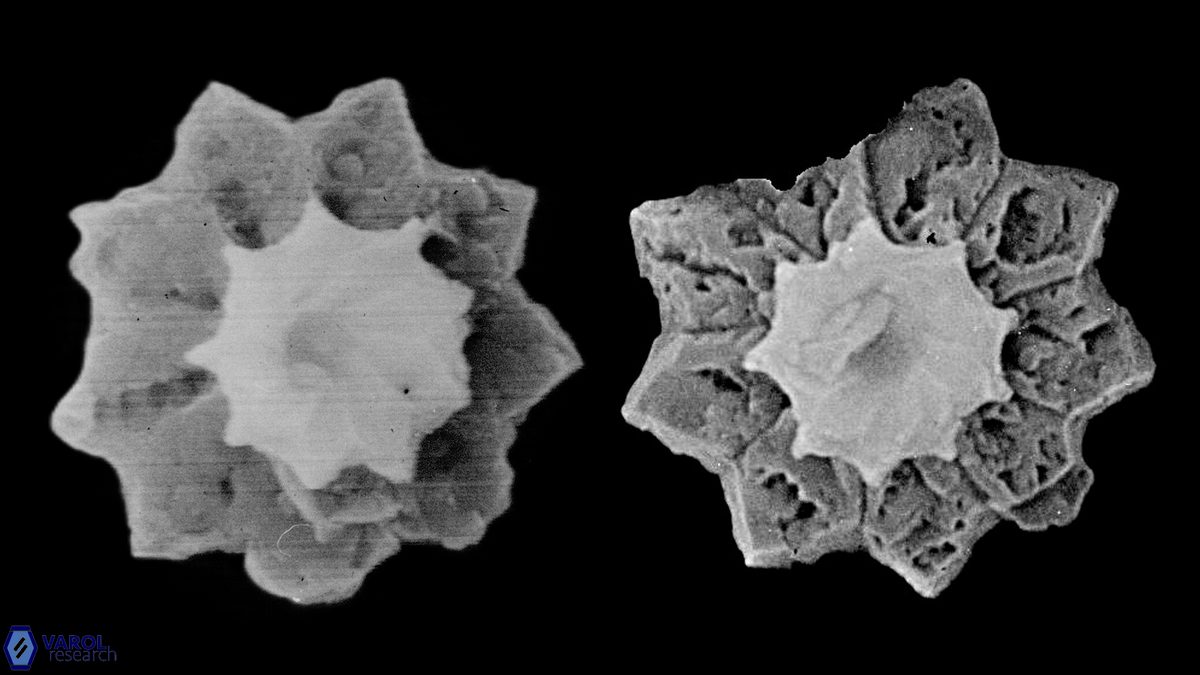
Article 36.1. Provisional name
A name is not validly published when it is not accepted by its author(s) in the original publication, for example:
(a) when it is merely proposed in anticipation of the future acceptance of the taxon concerned, or of a particular circumscription, position, or rank of the taxon (so-called provisional name); or
(b) when it is merely cited as a synonym. These provisions do not apply to names published with a question mark or other indication of taxonomic doubt, but accepted by their author(s).
Provisional genera include:
-
Coccolithites Kamptner, 1955
-
Ellipsoplacolithus Kamptner, 1963
-
Tremalithus Kamptner, 1948
Under the ICN, any species name originally published in association with a provisional genus is not validly published (ICN Art. 35.1) and therefore has no standing under the ICN.
Examples:
Tremalithus rotula Kamptner, 1967
Ellipsoplacolithus lacunosus Kamptner, 1963
In contrast, under the ICZN, a species published in association with a provisional genus may still be available, provided that all other requirements of the Code are met.
Examples:
Coccolithites delus Bramlette & Sullivan, 1961
Coccolithites distichus Bramlette & Sullivan, 1961
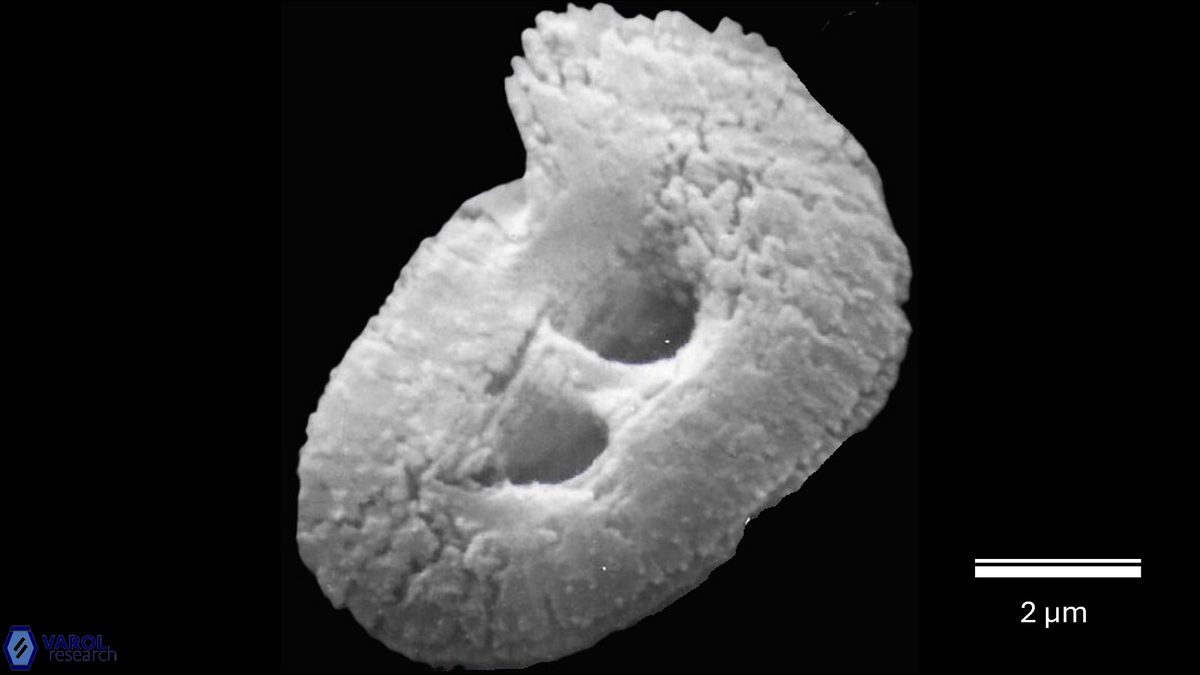
Article 37.1. Indication of Rank
A name published on or after 1 January 1935 without a clear indication of the rank of the taxon concerned is not validly published.
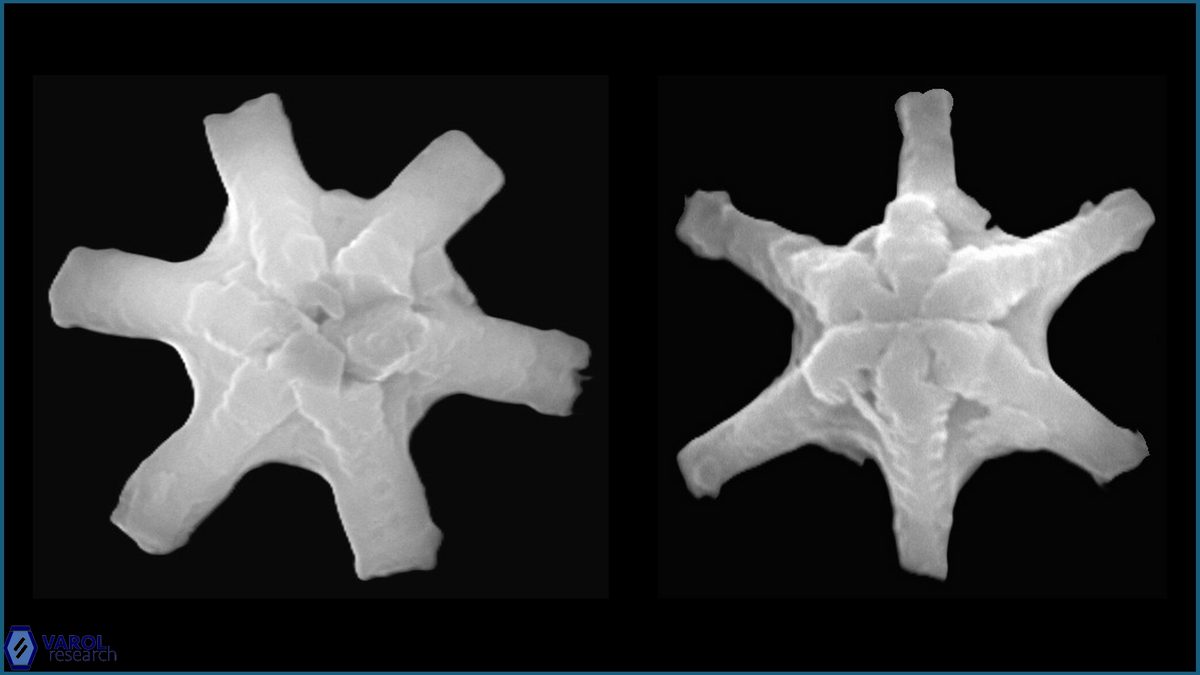
Article 38.1. Requirement of description or diagnosis
To be validly published, a name of a new taxon (see Art. 6.9) must:
(a) be accompanied by a description or diagnosis of the taxon (see also Art. 38.8 and 38.9) or, if none is provided in the protologue, by a reference (see Art. 38.14) to a previously and effectively published description or diagnosis (except as provided in Art. 13.4 and H.9; see also Art. 14.9 and 14.14); and
(b) comply with the relevant provisions of Art. 32–45 and F.4–F.5.
Article 38.2. Diagnosis
A diagnosis of a taxon is a statement of that which in the opinion of its author distinguishes the taxon from other taxa.
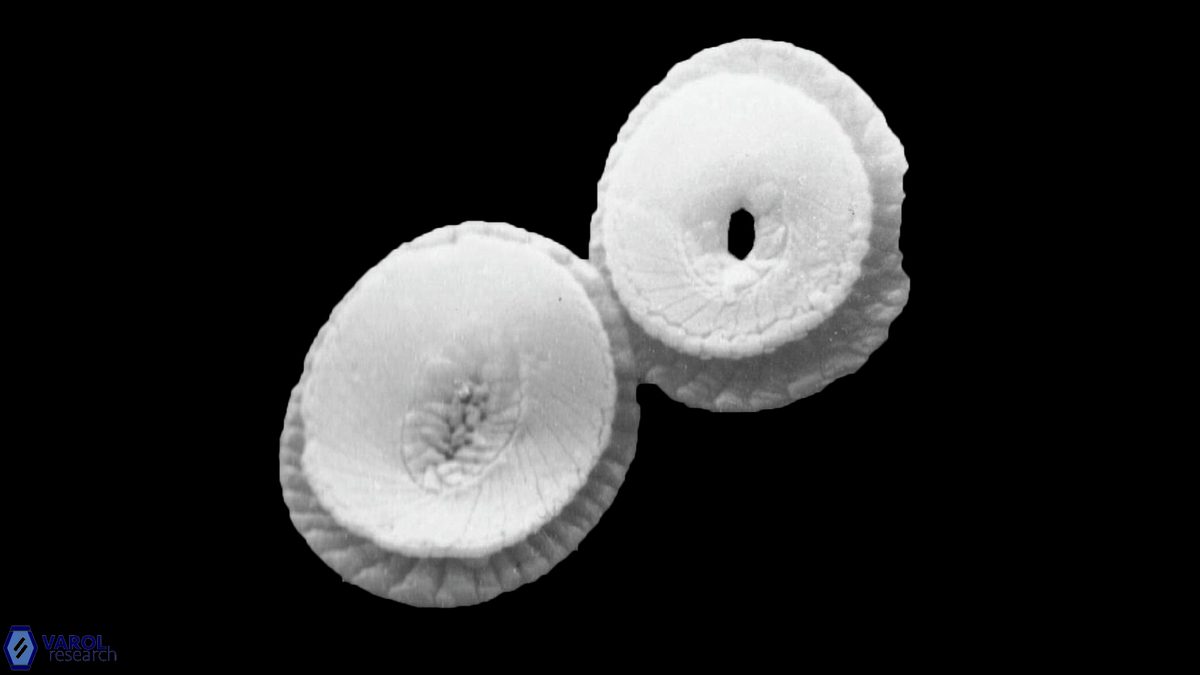
Article 40.1. Type
Publication on or after 1 January 1958 of the name of a new taxon of the rank of genus or below is valid only when the type of the name is indicated (see Art. 7-10; but see Art. H9 Note 1for the names of certain hybrids).
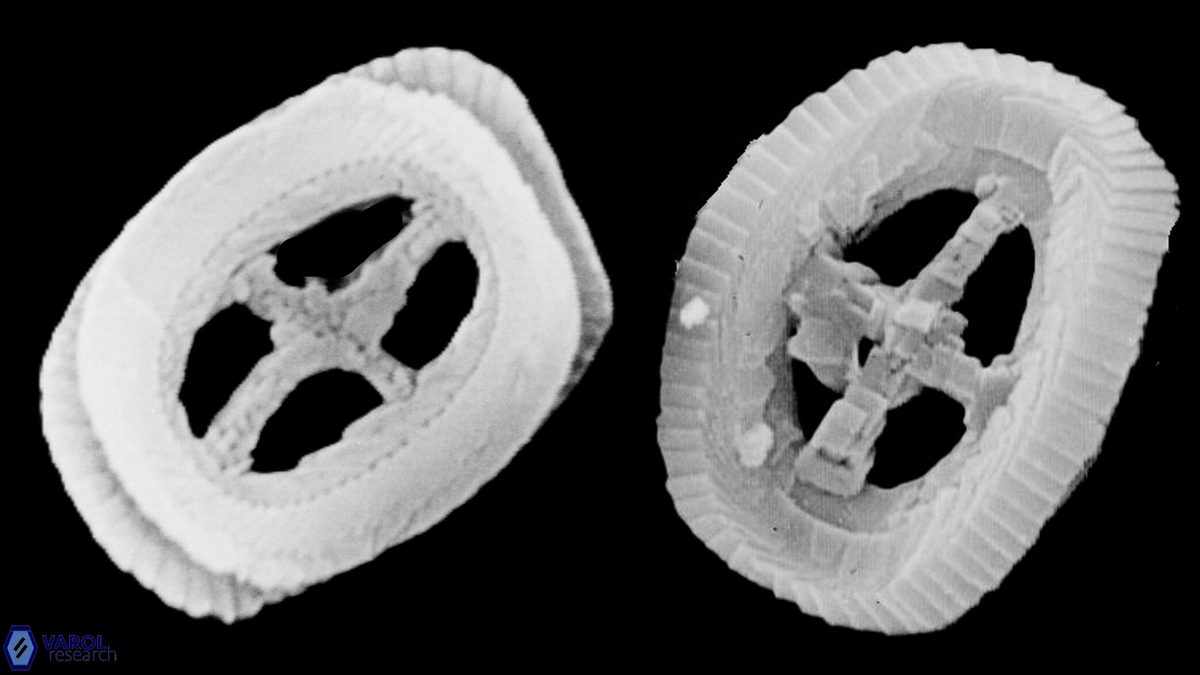
Article 45.1 Names covered by other Codes
If a taxon originally assigned to a group not covered by this Code is treated as belonging to the algae or fungi, any of its names need satisfy only the requirements of the relevant other Code that the author was using for status equivalent to valid publication under this Code (but see Art. 54 and F.6.1, regarding homonymy). The Code used by the author is determined through internal evidence, regardless of any claim by the author as to the group of organisms to which the taxon is assigned. However, a name generated in zoological nomenclature in accordance with the Principle of Coordination (ICZN Article 46) is not validly published under this Code unless and until it actually appears in a publication as the accepted name of a taxon.
Coccolithites cribellum Bramlette & Sullivan 1961 = Clausicoccus fenestratus (Bramlette & Sullivan 1961) Prins, 1979
Coccolithites cribellum was originally validly published under the ICZN and therefore retains nomenclatural validity when treated under the ICN.
Coccolithites anisotrema Kamptner 1955 = Pontosphaera desuetoidea Bartol, 2010
Coccolithites anisotrema was originally published under the ICBN (now ICN) in combination with the invalid genus Coccolithites according to ICN 36.1. Consequently, the name Coccolithites anisotrema is invalid under ICN Art. 35.1, and the taxon is correctly referred to as Pontosphaera desuetoidea Bartol, 2010.
Tremalithus barnesiae Black in Black & Barnes 1959 invalid according to ICN Art. 35.1
Tremalithus Kamptner, 1948
The genus Tremalithus was originally published under the ICBN (now ICN) and is invalid on multiple grounds, namely:
-
ICN Art. 36.1 (provisional name),
-
ICN Art. 38.1 (nomen nudum), and
-
ICN Art. 40.1 (type not designated).
Deflandre in Piveteau, 1952b, subsequently attempted to emend Tremalithus by designating Tremalithus placomorphus Kamptner, 1948, as the type species. However, this action does not validate the genus Tremalithus , as it remains invalid under ICN Arts. 36.1 and 38.1. Even if all three deficiencies had been addressed, Tremalithus would still lack nomenclatural standing because it was originally published under the ICN rather than the ICZN, and therefore cannot be retroactively validated through zoological usage.
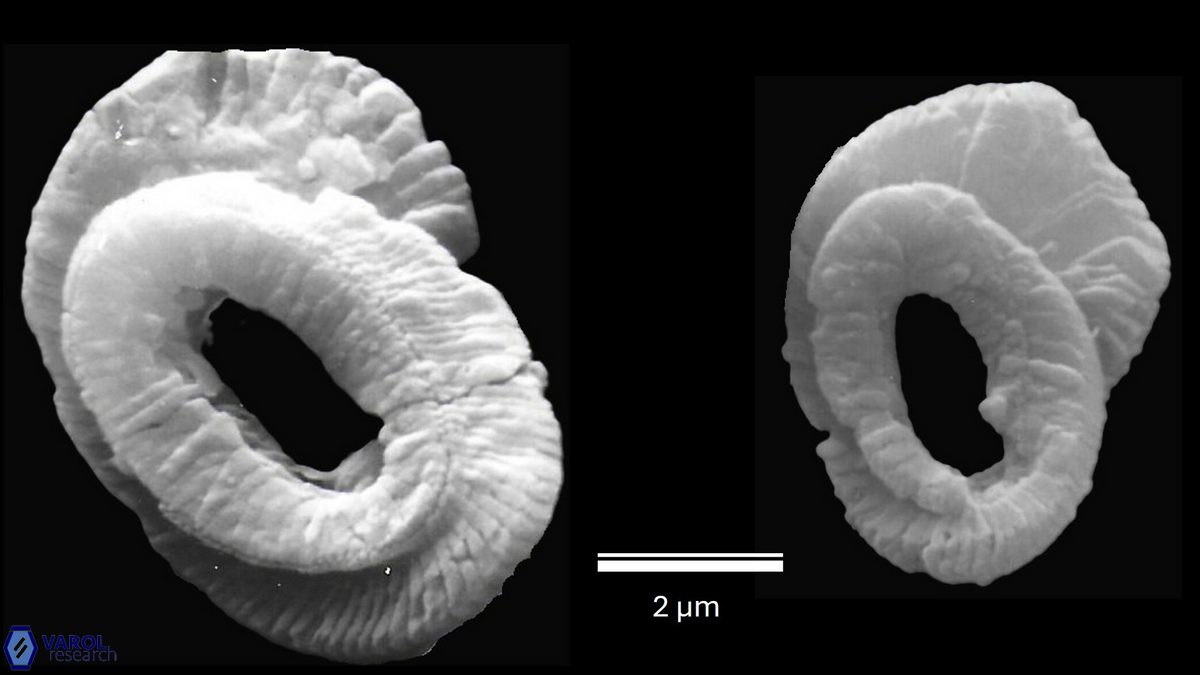
Article 51.1. Legitimate Name
A legitimate name must not be rejected merely because it, or its epithet, is inappropriate or disagreeable, or because another is preferable or better known (but see Art. 14, 56.1, and F.7.1), or because it has lost its original meaning.
Example:
Watznaueria angustoralis Reinhardt, 1964 not be rejected in favour of invalid but better known Tremalithus barnesiae Black, 1959 [Invalid ICN, Art. 35.1].

DEFINITION OF TERMS IN ICN (MADRID CODE)
Analysis: A figure or group of figures, often presented separately from the main illustration of the organism (though usually on the same page or plate), showing details aiding identification, with or without a separate caption (Art. 38.10; see also Art. 38.11).
Available name: A name published under the International Code of Zoological Nomenclature with a status equivalent to that of a validly published name under the International Code of Nomenclature for algae, fungi, and plants (Art. 45 Ex. 1 footnote).
Basionym: The legitimate, previously published name on which a new combination or name at new rank is based. The basionym does not itself have a basionym; it provides the final epithet, name, or stem of the new combination or name at new rank (Art. 6.10) (see also name at new rank, new combination).
Binding decision: A recommendation made by the General Committee and ratified by an International Botanical Congress on (1) whether or not a name is validly published (Art. 38.5) or (2) whether or not names are to be treated as homonyms (Art. 53.4) (see also Art. 20 Note 1). Binding decisions are listed in (1) App. VI or (2) App. VII.
Binomial (binary combination): A generic name combined with a specific epithet to form a species name (Art. 23.1) (see also combination).
Combination: A name of a taxon below the rank of genus, consisting of the name of a genus combined with one or two epithets (Art. 6.7).
Conserved name (nomen conservandum): (1) A name of a family, genus, or species, or in certain cases a name of a subdivision of a genus or of an infraspecific taxon, declared legitimate, even though it may have been illegitimate when published, and taking precedence over other specified names even if it lacks priority (Art. 14.1–14.7, 14.10, App. II, III, and IV). (2) A name for which the type, orthography, or gender has been determined by the conservation process (Art. 14.8, 14.9, 14.11, App. III, and IV) (see also protected name).
Conserved type (typus conservandus): A type attached to a name by the conservation process (Art. 14.8 and 14.9) to serve as the nomenclatural type when it would otherwise not be the type under Art. 7–10, 40, and F.5.4 (see also nomenclatural type).
Correct name: The name that must be adopted in accordance with the rules for a taxon with a particular circumscription, position, and rank (Art. 6.6, 11.1, 11.3, and 11.4)
Date of name: The date of valid publication of a name (Art. 33.1).
Description: A statement explicitly describing one or more features of an individual taxon. A description need not be diagnostic (Art. 38.4). It may include morphological, anatomical, biochemical, karyological, molecular, or similar features of the taxon but cannot serve as a validating description if it describes only properties such as those listed in Art. 38.3. Note that a description or a diagnosis is required for valid publication of a name of a new taxon (Art. 38.1(a)). A name, by itself, may convey some descriptive information about the taxon to which it is applied but is not sufficient to serve as a description or a diagnosis (see also diagnosis).
Descriptive name: A name of a taxon above the rank of family not formed from a generic name (Art. 16.1(b)).
Designation: [Not defined] – the term used for what appears to be a name but that (1) has not been validly published and hence is not a name in the sense of the Code (Art. 6.3) or (2) is not to be regarded as a name (Art. 20.4 and 23.7) (see also binary designation, type designation).
Diagnosis: A statement of properties that in the opinion of its author distinguishes a taxon from other taxa (Art. 38.2). Note that a diagnosis or a description is required for valid publication of a name of a new taxon (Art. 38.1(a)) (see also description).
Effective publication: Publication in accordance with Art. 29–31 (Art. 6.1).
Epithet: [Not defined] – used for the words in a combination other than the generic name and any rank-denoting term; hyphenated words are equivalent to a single word (Art. 6.7, 11.4, 21.1, 23.1, and 24.1; see also Art. H.10.2) (see also final epithet).
Figure: See analysis.
Final epithet: The last epithet in sequence in any particular combination, whether at the rank of a subdivision of a genus, or of a species, or of an infraspecific taxon (Art. 6.10 footnote).
Fossil-taxon: A taxon (diatom taxa excepted) the name of which is based on a fossil type (Art. 1.2 and 13.3).
Gathering: Material collected by the same collector(s) at the same time from a single locality and presumed to be of a single taxon (Art. 8.2 footnote; see also Art. 8 Note 1) (see also duplicate).
Holotype: The one specimen or illustration designated in the protologue as the nomenclatural type of a name of a new species or infraspecific taxon or, when no type was designated, used by the author(s) when preparing the protologue (Art. 9.1, 9.2, and Note 1) (see also nomenclatural type).
Homonym: A name spelled exactly like another name published for a taxon at the same rank based on a different type (Art. 53.1). Note that names of subdivisions of the same genus or of infraspecific taxa within the same species that are based on different types and have the same final epithet are homonyms, even if they differ in rank (Art. 53.3), because the rank-denoting term is not part of the name (Art. 21 Note 1 and Art. 24 Note 2) (see also confusingly similar names).
Illegitimate name: A validly published name that is not in accordance with specified rules (Art. 6.4), principally those on superfluity (Art. 52) and homonymy (Art. 53 and 54) (see also homonym, superfluous name).
Illustration: A work of art or a photograph depicting a feature or features of a species or infraspecific taxon, e.g. a drawing, a picture of a herbarium specimen, or a scanning or transmission electron micrograph, but not a photograph of habitat (Art. 6.1 footnote).
Improper Latin termination: A termination of a name or epithet not in accordance with the termination required by the Code (Art. 16.3, 18.4, 19.7, and 32.2).
Indelible autograph: Handwritten material reproduced by some mechanical or graphic process (such as lithography, offset, or metallic etching) (Art. 30.6).
Indirect reference. A clear (if cryptic) indication, by an author citation or in some other way, that a previously and effectively published description or diagnosis applies (Art. 38.15) or that a basionym or replaced synonym exists (Art. 41.3).
Lectotype: One specimen or illustration designated from the original material as the nomenclatural type, in conformity with Art. 9.11 and 9.12, if the name was published without a holotype, or if the holotype is lost or destroyed, or if a type is found to belong to more than one taxon (Art. 9.3) (see also nomenclatural type).
Legitimate name: A validly published name that is in accordance with the rules, i.e. one that is not illegitimate (Art. 6.5) (see also illegitimate name).
Monotypic genus. A genus for which a single binomial is validly published (Art. 38.7).
Name: A name that has been validly published, whether it is legitimate or illegitimate (Art. 6.3) (see also designation).
Neotype: A specimen or illustration selected to serve as the nomenclatural type if no original material exists or as long as it is missing (Art. 9.8 and 9.13; see also Art. 9.16 and 9.19) (see also nomenclatural type).
Nomen conservandum (nom. cons.): See conserved name.
Nomen novum (nom. nov.): See replacement name.
Nomen nudum (nom. nud.): A designation of a new taxon published without a description or diagnosis or reference to a description or diagnosis (Art. 38 Ex. 1, Rec. 50B) (see description, designation, diagnosis).
Nomen rejiciendum (nom. rej.): A name rejected in favour of a name conserved under Art. 14 or a name ruled as rejected under Art. 56 (App. IIA, III, IV, and V) (see also nomen utique rejiciendum, rejected name).
Nomen sanctionatum (nom. sanct.): See sanctioned name.
Nomenclatural type: A specimen, or in some cases an illustration (Art. 8.1), to which the name of a taxon is permanently attached (Art. 7.2). The nomenclatural type of the name of a species or infraspecific taxon is a holotype (Art. 9.1), lectotype (Art. 9.3), neotype (Art. 9.8), or conserved type (Art. 14.9), any of which may be supported by an epitype (Art. 9.9).
Non-fossil taxon. A taxon the name of which is based on a non-fossil type (Art. 13.3).
Nothogenus: A hybrid genus (Art. 3.2).
Original material: The set of specimens and illustrations from which a lectotype may be chosen (see Art. 9.4, Art. 9 Notes 2–5, Art. F.3.10, and Art. F.3 Note 2 for details), or the holotype (see Art. 9.1).
Page reference: Citation of the page or pages on which the basionym or replaced synonym was validly published or on which the protologue appears (Art. 41 Note 1; see also Art. 41 Note 2 and Rec. 41A.2).
Paratype: Any specimen cited in the protologue that is neither the holotype nor an isotype, nor one of the syntypes if in the protologue two or more specimens were simultaneously designated as types (Art. 9.7).
Priority: A right to precedence established by the date of valid publication of a legitimate name (Art. 11) or of an earlier homonym (Art. 53 Note 4), or by the date of designation of a type (Art. 7.10, 7.11, and F.5.4).
Pro synonymo (pro syn., as synonym): A citation indicating that a name or a designation is merely cited as a synonym (Art. 36.1(b) and Rec. 50A) (see designation).
Protected name: The name of an organism treated as a fungus listed (in App. IIA, III, or IV) with its type and treated as conserved against any competing listed or unlisted synonyms or homonyms (including sanctioned names), although conservation under Art. 14 overrides this protection (Art. F.2.1) (see also conserved name).
Protologue: Everything associated with a name at its valid publication, e.g. description, diagnosis, illustrations, photographs of habitat, references, synonymy, geographical data, citation of specimens, discussion, and comments (Art. 6.13 footnote).
Provisional name: A designation proposed in anticipation of the future acceptance of the taxon concerned, or of a particular circumscription, position, or rank of the taxon (Art. 36.1(a)) (see designation).
Rank: [Not defined] – used for the relative position of a taxon in the taxonomic hierarchy (Art. 2.1). For suprageneric names published on or after 1 January 1887, the rank is indicated by the termination of the name (see Art. 37.2 and footnote). For names published on or after 1 January 1953, a clear indication of the rank is required for valid publication (Art. 37.1).
Rejected name: A name ruled as not to be used, either by formal action under Art. 14, 56, or F.7 overriding other provisions of the Code (see nomen rejiciendum, nomen utique rejiciendum) or because it was nomenclaturally superfluous when published (Art. 52) or a later homonym (Art. 53 and 54). A name treated as rejected under Art. F.7 may become eligible for use by conservation under Art. 14.
Replaced synonym: The legitimate or illegitimate, previously published name on which a replacement name (nomen novum) is based. The replaced synonym, when legitimate, does not provide the final epithet, name, or stem of the replacement name (Art. 6.11) (see replacement name).
Replacement name (nomen novum): A new name published as an explicit substitute (avowed substitute) for a legitimate or illegitimate, previously published name, which is its replaced synonym and which, when legitimate, does not provide the final epithet, name, or stem of the replacement name (Art. 6.11 and 7.4; for names not explicitly proposed as substitutes see Art. 6.12 and 6.13) (see replaced synonym).
Sanctioned name (nomen sanctionatum): The name of a fungus treated as if conserved against earlier homonyms and competing synonyms, through acceptance in a sanctioning work (Art. F.3.1).
Specimen: A gathering, or part of a gathering, of a single species or infraspecific taxon, disregarding admixtures, mounted either as a single preparation or as more than one preparation with the parts clearly labelled as being part of the same specimen or having a single, original label in common (Art. 8.2 and 8.3; for fossil-taxa see Art. 8.6). A specimen may not be a living organism or an active culture (Art. 8.4) (see gathering).
Subdivision of a family: Any taxon at a rank between and not including family and genus (Art. 4 Note 2).
Subdivision of a genus: Any taxon at a rank between and not including genus and species (Art. 4 Note 2).
Superfluous name: A name that, when published, was applied to a taxon that, as circumscribed by its author, definitely included the type of a name that ought to have been adopted, or of which the epithet ought to have been adopted, under the rules (Art. 52.1). A superfluous name is illegitimate except as provided by Art. 52.4 or unless conserved (Art. 14), protected (Art. F.2), or sanctioned (Art. F.3).superseded. [Not defined] – used for a designation of a type that is not followed but is replaced by a subsequent designation of a different type under the provisions of Art. 9.15, 9.18, 9.19, 10.2, or 10.5.
Synonym: [Not defined] – one of two or more names that apply to the same taxon. Also used in the sense of a name that applies to a taxon but is not the correct name for that taxon (see heterotypic synonym, homotypic synonym).
Syntype: Any specimen cited in the protologue when there is no holotype, or any of two or more specimens simultaneously designated in the protologue as types (Art. 9.6). Illustrations cannot be syntypes.
Tautonym: A binary designation in which the specific epithet exactly repeats the generic name (Art. 23.4).
Taxon (taxa): A taxonomic group at any rank (Art. 1.1).
Validly published: Effectively published and in accordance with the relevant provisions of Art. 32–45, F.4, F.5.2, F.5.3, and H.9 (Art. 6.2) (see designation, name; see also effective publication).
LATIN TERMS AND THEIR ABBREVIATIONS USED IN THE MADRID CODE
This list includes Latin terms and their abbreviations, either or both of which appear in this Code, except for Latin words abbreviated as part of book or journal titles in bibliographic citations. Terms in bold have entries in the Glossary.
| Term | Abbreviation | Meaning |
| ad interim | ad int. | for the time being |
| Anonymus | Anon. | Anonymous |
| auctorum | auct. | of the authors |
| clarus / clarissimus | cl. | famous / most famous |
| combinatio nova | comb. nov. | new combination |
| confer | cf. | compare |
| descriptio generico-specifica | – | description of genus and species, i.e. one description simultaneously validating the name of a genus and the name of its single species |
| emendavit | emend. | (he / she) has emended |
| epitypus | – | epitype |
| et alii | et al. / & al. | and others |
| et cetera | etc. | and the others (remainder, rest) |
| ex / e | – | from |
| ex holotypo | – | ex-holotype |
| ex isotypo | – | ex-isotype |
| ex typo | – | ex-type |
| exclusa specie / exclusis speciebus | excl. sp. | excluding the species (singular) / excluding the species (plural) |
| exclusa varietate / exclusis varietatibus | excl. var. | excluding the variety / excluding the varieties |
| excluso genere / exclusis generibus | excl. gen. | excluding the genus / excluding the genera |
| exempli gratia | e.g. | for example |
| filius | f. | son (in author citations) |
| forma specialis / formae speciales | f. sp. | special form / special forms |
| genus novum | gen. nov. | new genus |
| hic designatus | – | designated here |
| holotypus | – | holotype |
| Hortulanorum | Hort. | of gardeners (in citations of scientific names; could also refer to hortus, garden) |
| icon | ic. | image, i.e. an illustration |
| id est | i.e. | that is |
| in litteris | in litt. | in writing |
| incertae sedis | – | of an uncertain seat, i.e. of uncertain taxonomic position |
| ineditus | ined. | not published |
| lectotypus | – | lectotype |
| loco citato | l.c. / loc. cit. | in the place cited |
| manuscriptum / manuscripta | ms. / mss. | manuscript / manuscripts |
| mihi | m. | for me, used after a scientific name to indicate that the author has introduced it |
| mutatis characteribus | mut. char. | with changed features (characters) |
| nec | – | and not, nor |
| neotypus | – | neotype |
| nobis | nob. | for us, used in the same way as mihi |
| nomen alternativum | nom. alt. | alternative name, for eight specified family names and one subfamily name |
| nomen conservandum | nom. cons. | name to be conserved, i.e. conserved name |
| nomen novum | nom. nov. | new name, i.e. a replacement name |
| nomen nudum | nom. nud. | naked name, i.e. without a validating description or diagnosis or reference to one |
| nomen rejiciendum | nom. rej. | name to be rejected, i.e. rejected name |
| nomen sanctionatum | nom. sanct. | sanctioned name |
| nomen specificum legitimum | – | legitimate specific name, i.e. Linnaean phrase name |
| nomen triviale / nomina trivialia | – | trivial name, i.e. Linnaean specific epithet / trivial names |
| nomen utique rejiciendum | nom. utique rej. | name to be rejected outright (suppressed name) |
| non | – | not |
| opera utique oppressa | – | suppressed works |
| opere citato | op. cit. | in the work cited |
| orthographia conservanda | orth. cons. | orthography to be conserved (see orthographical variants) |
| pro hybrida | pro hybr. | as a hybrid |
| pro parte | p. p. | in part |
| pro specie | pro sp. | as a species |
| pro synonymo | pro syn. | as a synonym |
| sensu amplo | s. ampl. | in a large (ample) sense |
| sensu lato | s. l. | in a broad (wide) sense |
| sensu stricto | s. str. | in a narrow (strict) sense |
| species nova | sp. nov. | new species |
| status novus | stat. nov. | new status, i.e. name at new rank |
| tabula | t. | tablet, i.e. plate (illustration) |
| typus | – | type, i.e. nomenclatural type |